. . .
St. Petersburg has had a long love affair with baseball — and so have its writers.
Since 1914 more Major League spring training games have been played in this city than in any other. From the St. Louis Browns to the Tampa Bay Rays, St. Petersburg has hosted nine teams. When Babe Ruth arrived in 1925 for spring training, half the town and a marching band came out to greet him (Ruth’s winter estate — a 7,381-foot mansion — recently went up for sale for $2.1 million).
In 2004 Ruth appeared as a memorable secondary character in Eckerd College history professor Lee Irby’s rollicking novel 7,000 Clams about a bootlegger and an IOU for $7,000 signed by the Babe. Baseball has loomed even larger in the works of St. Petersburg writers Rick Wilber, Jane Heller and Peter Golenbock who collectively have written scores of novels, memoirs, biographies, histories and short stories with a baseball theme.
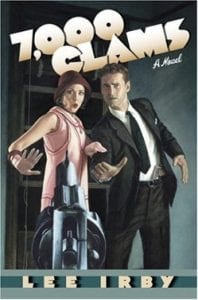 * * *
* * *
Every October as the baseball playoffs begin and I hear the announcers’ play-by-plays, I am transported back to a living room in Kenosha, Wisconsin. It is October 1962. My father is sprawled on an overstuffed green chair, peering at an RCA set with an impossibly small screen. Jack Brickhouse is yelling ‘Hey-Hey, Hey-Hey. The Cubs are winning.’
Of course, that never happened. In 1962 the Cubs lost a record-shattering 103 games. They never made the playoffs — they ended the season a whopping 42 1/2 games behind the National League winner, the San Francisco Giants who went on to lose the World Series to the New York Yankees. But in my reveries the Cubs are winners.
 . . .
. . .
Baseball, time travel and altered history are things Rick Wilber understands well. A science fiction and fantasy writer, Wilber frequently goes back in time to write alternative history stories about Moe Berg, a baseball player who in real life was a spy. Four are collected in The Moe Berg Episodes.
Many have appeared in Asimov’s Science Fiction magazine, including “The Wandering Warriors,” a 30,000-word tale co-authored with Alan Smale, an Oxford-educated astrophysicist. Originally a cover story in Asimov and soon to be published as a novella, it features a retired Moe Berg traveling back to ancient Rome to teach the Romans the game of baseball.
According to Wilber, on some ancient murals the Romans can be seen playing a game with a small ball. “So who knows? Perhaps Moe Berg did time travel.”
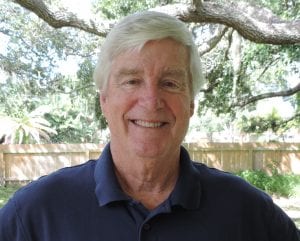
One of Wilber’s most unusual Moe Berg stories is a political satire that appears in the anthology Alternative Peace. The editors solicited stories that alter history in ways that make the world a better place. In Wilber’s story, called “Donny Boy,” Berg helps a a little boy catch Bobby Thompson’s ball in his game-winning home run in 1951.
That home run, known in baseball lore as The Shot Heard Round the World, so inspires little Donny Trump that instead of becoming President of the United States, he winds up as the much-reviled owner of the Mets.
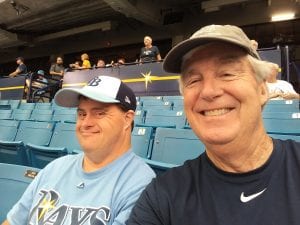
“I was never a Mets fan,” admits Wilber. He grew up in St. Louis where his father, Del Wilber, played for the Cardinals. Later Del Wilber played backup catcher for the Red Sox. “When the Rays aren’t playing, I don’t find it hard to cheer on the Cardinals and the Red Sox.”
Wilber now, however, is a Rays fan, cheering them on regularly at Tropicana Field with his son, Richard Jr. “I take such a fatherly joy in taking my Down Syndrome son to the games. He eats a bad pizza. I eat a hot dog. He really knows his baseball. People are always coming up to him asking him questions and high-fiving him.” His son doesn’t like to stay for the whole game. “During the 7th inning stretch, we sing ‘Take Me Out to the Ball Game” with lots of gusto together and then we leave. I rarely see the Rays for the 8th and 9th innings.”

Wilber’s work-in-progress again stars Moe Berg, a novel about racism called Alternating Currents. “All the Moe Berg stories are about his fight against racism — and we’re flirting with it again.”
Not all of Wilber’s baseball projects, however, have featured Berg. His first baseball story, called “The Kids in Question,” was published in 1988 in Spitball, a literary magazine devoted entirely to baseball. In 2009 his novel Rum Point was subtitled ‘A Baseball Novel.’ “One reviewer complained that it was too much murder mystery and not enough baseball,” says Wilber.
His father inspired one of Wilber’s novel (Where Garagiola Waits) and a memoir (My Father’s Game). When his father was dying, Wilber became his primary caretaker and remaining fan base. To engage his dad, who had played after all for the Red Sox, he appealed to their mutual distaste for the Yankees.
“My dad was in an assisted living facility,” says Wilber. “I knew if I walked into his room and asked him, ‘What about those damned Yankees,’ he would be happy to talk about how much he hated the Yankees.”
* * *
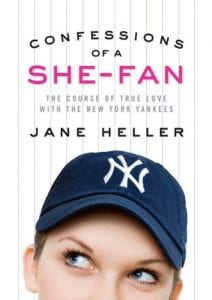 . . .
. . .
Jane Heller, who only recently moved to St. Petersburg, has held fast as a New York Yankees fan.
“No matter what else this day brings, the Yankees swept the Rays yesterday and I’m basking in the afterglow. (Sorry, Peter Golenbock).”
That was Heller recently punking her friend and fellow New York Times bestselling author Peter Golenbock on Facebook.
Both are New York natives. Golenbock came to St. Petersburg in 1989. Heller is a more recent transplant — a move she credits to Golenbock.
Golenbock, who has taught courses on the influence of sports on American history, is a prolific writer, not only on baseball. But six of his 10 New York Times bestsellers have been about the boys of summer: Dynasty: The New York Yankees 1949-1964, The Bronx Zoo (with Sparky Lyle), Number 1 (with Billy Martin), Balls (with Graig Nettles), Idiot (with Johnny Damon) and House of Nails (with Lenny Dykstra).
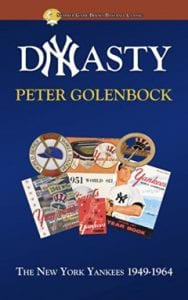 . . .
. . .
He has also written about the Brooklyn Dodgers (Bums), the Boston Red Sox (Fenway), the Chicago Cubs (Wrigleyville) and the St. Louis Cardinals and Browns (The Spirit of St. Louis); a biography of George Steinbrenner and another of Billy Martin (which The New York Time said “reads like a Russian novel”), a novel about Mickey Mantle (7: The Mickey Mantle Novel), two children’s books (Teammates about Jackie Robinson’s first season as a Brooklyn Dodger and Brave in Every Way about Hank Aaron’s ordeal in breaking Babe Ruth’s career home run record), and a book about former major league ballplayers in the Senior Professional Baseball League.
Heller, on the other hand, has only written one book about baseball — from a fan’s point of view. She is best known for romantic comedies with such witty titles as Infernal Affairs and An Ex to Grind (14 of them have made the New York Times and U.S.A. Today bestseller lists, nine of them have been optioned for film or television).
Her latest book also has a clever title: You’d Better Not Die Or I’ll Kill You: A Caregiver’s Survival Guide to Keeping You in Good Health and Good Spirits. It’s a guide to caring for loved ones with a chronic or progressive illness. Heller’s husband has Crohn’s disease. Her mother, whom she cared for until her death, had dementia.
But her first non-fiction book — Confessions of a She-Fan: The Course of True Love with the New York Yankees — is a spirited tale about chasing after the boys of summer. It chronicles the season she and husband Michael took to the road to attend (nearly) every Yankees game. The book spawned a blog at janeheller.com — called, of course, Confessions of a She-Fan — and a screenplay.
Q&A with
Jane Heller and Peter Golenbock
I sent the New York Yankee-loving Jane and loyal-to-the Rays Peter — frenemies at the stadium but friends everywhere else — a list of the same questions to see if there was a difference between a she-fan and a he-fan. Below are their responses.
They only agreed on one thing – Mickey Mantle.
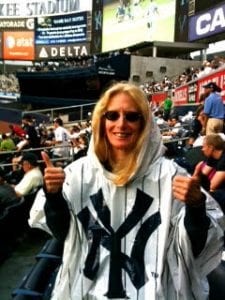
Is there a difference between a he-fan and a she-fan?
GOLENBOCK: There is no difference between a she-fan and a he-fan. One she-fan I know was crazy enough to follow the Yankees around for a whole season and write a very good book about it.
HELLER: Women are different than men in the way we are fans. Female fans view the game from a more emotional perspective. We are just as knowledgeable about the game as men, but we are as fascinated by the interactions between the players as we are about the velocity on a pitcher’s fastball. Some of us wear pink caps and jerseys, while others of us think it is maddening that we are consigned to our own color.
What we all share is a passion for the game, for our team, for our guys. I see us in every city and ballpark and hotel lobby, cheering and hanging out and snapping photos. We are teenagers and twentysomethings, soccer moms and corporate executives, baby boomers and seniors. We are everywhere.
. . .
Why does baseball inspire writers more than any other sport?
GOLENBOCK: I was born with the baseball gene. To me baseball is not a game. It is a religion. There are many Bibles, including Ball Four by Jim Bouton, The Glory of Their Times by Larry Ritter, and The Boys of Summer by Roger Kahn.
Baseball has rituals, songs, Gods and saints. My first sports memory was Willie Mays’ catch in the 1954 World Series of the Vic Wertz blast to centerfield at the Polo Grounds. Mickey Mantle and Jackie Robinson have been important religious icons in my life. Baseball is, in fact, the kindest of all the religions.

HELLER: Watching a baseball game is like reading a novel. There’s a beginning, a middle and an end. What purists also love is that there’s no time clock in baseball — a game lasts as long as it lasts until its conclusion. There are heroes and villains. There’s conflict, drama, a twist here, a turn there. The resolution is always a surprise.
Some players are, as in a good novel, characters you come to care about because of their personality traits and because they look like men who could actually exist in the everyday world, neither towering titans like pro basketball players nor pumped-up superheroes like pro football players. When I settle in to watch a baseball game, I’m ready to begin a new story.
. . .
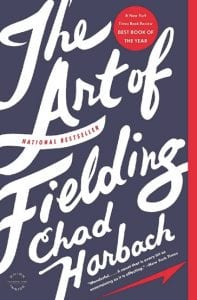 . . .
. . .
What is your favorite fictional book about baseball?
GOLENBOCK: My favorite fictional book about baseball is Shoeless Joe by W.P. Kinsella. My second favorite work of baseball fiction is The Natural. The third one is Bang the Drum Slowly.
HELLER: The easy answer would be Bernard Malamud’s The Natural because it was the first baseball novel I ever read and it’s taken on almost mythical proportions over the years thanks to the movie version starring Robert Redford as Roy Hobbs.
But my favorite novel – the one I enjoyed the most – is The Art of Fielding by Chad Harbach. The story’s college baseball star, Henry Skrimshander, is a gifted shortstop, a prodigy destined for the major leagues, who suddenly, inexplicably, loses the ability to throw to first base. As a result, his life and the lives of those around him are upended. Not only did I find the writing engaging, but I felt drawn to Henry and the idea that someone could, seemingly out of the blue, lose his or her gift, and wondered how I would cope in that circumstance. The spell of the book hung over me for a long time.
. . .
What is your favorite non-fiction baseball book?
GOLENBOCK: The best book I have ever read, and I am reading it right now again, is Robert Caro’s stupendous biography of Robert Moses entitled The Power Broker. The book that made the biggest impact on my life was The New York Yankees, by Frank Graham. I read it (ten times) when I was 12 or 13. It was published in 1948.
When I was working for Prentice-Hall in the summer of 1972, I walked into the office of the head editor of the trade book department and pitched a book idea to them. I told him I wanted to write the sequel to Graham’s Yankee book, which I wanted to call Dynasty. I talked my way into my first book contract.
. . .
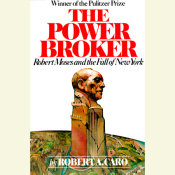 . . .
. . .
HELLER: This one’s a tie. The first answer is Ball Four by Jim Bouton. The clubhouse antics Bouton described may seem tame by today’s standards, but in 1970 when the book was published, they were eye-opening. The book broke the cardinal rule in baseball: Never tell on your teammates. As a sophomore in college, I idolized my Yankees and Bouton exposed them as – shock and awe – a bunch of regular guys who do and say dumb and sometimes very funny things. I loved the book and I loved Bouton for having the guts to write it.
My second favorite is The Bronx Zoo, and I’m not just saying that because Peter Golenbock, who wrote the book with Yankees relief pitcher Sparky Lyle, is a friend. In the same way that Bouton ripped the lid off the closed clubhouse world of baseball, so did Lyle only in the most uproarious, truly memorable ways. The expression ‘You just can’t make this stuff up’ applies.
. . .
Which baseball park is your favorite?
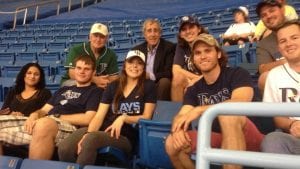
at Tropicana Field
GOLENBOCK: The old Yankee Stadium. As a teen I would ride the New Haven railroad from Stamford, Connecticut, to Grand Central Station and then I’d take the Lexington Avenue subway to the stadium. For $6 I could buy the best box seat in the house and then I would shmear the usher another $10 to sit in a box right near the dugout. Today that same seat would cost $1,200.
HELLER: I should say Yankee Stadium, both the newer version and the place where I spent so much time from about age 10. But I love Camden Yards in Baltimore. It was one of the first ballparks – if not the first – to be built in the heart of a city’s downtown instead of out in the suburbs, and it was designed to resemble a charming old-time ballpark. There are better, newer versions now in other cities, as Camden is aging, but when I went on the She-Fan book tour, I looked forward to coming back to Camden Yards more than any other.
. . .
What foods do you eat when you are watching a baseball game?
GOLENBOCK: My favorite ballpark food is the hot dog. Currently as a season ticket holder, I can buy a hot dog for two dollars. I put on mustard, relish and more onions than most, and I go to town. But I will only eat one. They are very fattening.
HELLER: It’s sacrilegious, I know, but I don’t like hot dogs. At Yankee Stadium, I get a turkey sub. At Camden Yards, I go straight for the Boog’s Barbecue concession (Boog Powell was a Baltimore Orioles first baseman). Boog’s has the best barbecue, baked beans and coleslaw at any stadium. I’m salivating just thinking about it. At a Rays game recently, I tried the Impossible Burger. I’m all over the map, foodwise.
. . .
How does the experience of watching a baseball game change when you see it live rather than on TV?
GOLENBOCK: The difference between watching a game at the ballpark rather than on TV is the same as what it is like to sit in a cathedral rather than watch the service on TV.
At the ballpark I am in a community with like-minded lovers of the game. At the game you can watch the announcers and reporters in the booth, the mascots on the field and players high-fiving each other, and as the game goes on you can communicate with all those sitting around you.
At home you sit and watch and scream at the TV. It’s still fun, but it’s less of an experience.
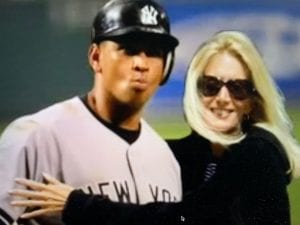
HELLER: There’s nothing like a crowd to energize a baseball fan. Experiencing a game with other people is a communal, social experience that can’t be matched when you’re sitting alone in front of the TV.
I feel the same way about going to the movie theater instead of streaming everything on Netflix. I love hearing my fellow fans cheering (or booing) – reacting, in any case. One of my favorite rituals at Yankee Stadium happens when the ‘bleacher creatures’ in the outfield chant the names of the Yankees players in a sing-song way just before the first pitch. ‘Der-ek Je-ter.’ The Yankees’ current star is Aaron Judge, and the bleacher creatures come decked out in old-fashioned long-white judge wigs.
I could do without the constant blaring of music from the speakers at all ballparks today – moments of silence are not the end of the world! – and I find the visual cues to clap demeaning. I think fans are too smart to be told when to clap.
. . .
Do you have any baseball rituals or superstitions?
GOLENBOCK: I have no rituals or superstitions. I am a baseball atheist.
HELLER: I have many! Like the players, who are notoriously superstitious, fans have their nuttiness too. When the Yankees are in the playoffs, Michael and I will eat, say, pizza. If they win that game, we’ll have pizza for the next game, and so on. If they lose the first game, we’ll move on to club sandwiches. Which is another way of saying we have ‘lucky food.’ I’ll also wear the same jersey for each playoff game and change it only if the team loses – ‘lucky clothes.’
Superstitions are a fan’s way of attempting to control the outcome, since we’re just bystanders.
. . .
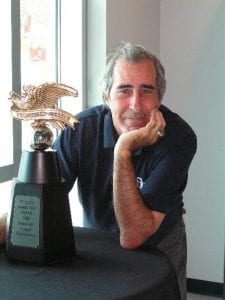
How did you end up in St. Petersburg?
GOLENBOCK: I arrived in St. Petersburg the evening of October 31, 1989. I had driven from Ridgefield, Connecticut, to arrive in time for the first team meeting of the St. Petersburg Pelicans of the Senior Professional Baseball League. The league had eight teams, and I wanted to spend the season with one of them and write a book about the season.
Earlier I had attended the organizational meeting in Palm Beach at The Breakers Hotel. Of the eight teams, I chose to spend the season with the West Palm Beach Tropics, managed by Dick Williams, the former A’s and Red Sox manager. But a day later I was told by the Tropics PR guy they didn’t want me because of the book I had written, Personal Fouls, that had gotten basketball coach Jim Valvano of NC State fired. The PR guy was a friend of Valvano.
When I called league founder Jim Morley to ask what I should do next, he said, ‘I own the St. Pete Pelicans. Spend the season with the Pelicans.’ I arrived the night of the 31st, driving down the Bayway, when I saw the Don Cesar Hotel as the sun was going down.
‘This is where I want to spend the rest of my life,’ I said to myself.
I have done that. And I spent the season with the Pelicans, who won the only Senior League championship that year. My book, The Forever Boys, is a chronicle of that season.

HELLER: In May of 2007, I wrote a piece for the New York Times sports section in which I announced that I was divorcing the N.Y. Yankees on the grounds of mental cruelty — they were in last place in their division and breaking my heart.
As a diehard fan who’d watched every game, the players looked lethargic, error-prone, mediocre — especially compared to the Tampa Bay Devil Rays (their name in 2007), whose players were young and frisky and eager. The article generated so much attention that it was the number-one emailed story the week it ran.
What stunned me was that while I had intended the piece to be humorous, making the case for how a devotion to a baseball team was similar to a romantic relationship, much of the feedback accused me of being a traitor, a turncoat, a bandwagon fan. The commotion caught the attention of an editor at Rodale, who offered me a book contract. The hook? I would hit the road after the All-Star break and go to every Yankees game in every city for the rest of the season in an attempt to discover what true fandom was. I loved the idea and regarded the book as my ‘Eat, Pray, Love Does Baseball.’
Over the next four-plus months, the Yankees traveled numerous times to St. Petersburg to play the Rays and my husband Michael, who joined me on the adventure, and I stayed at the Vinoy each time, because the team stayed there. We strolled around Beach Drive and the general downtown area and really liked what we saw.
When a sportswriter friend, the bestselling author and local, Peter Goldenbock, met us for coffee one afternoon, he extolled the virtues of the city and said, ‘If you like it now, wait until you see it ten years from now.’ Ten years went by. Michael and I were thinking of selling our house in Connecticut and moving to a warmer climate.
‘What about St. Pete?’ we said simultaneously. And here we are.
. . .
Have you ever switched your loyalty from one team to another?
HELLER: I’ve been very disappointed by the Yankees front office from time to time, whether it was because they tried to keep me at arm’s length while I was writing the She-Fan book or because they were among the last teams to have a Gay Pride night or because they traded away a favorite player. And though I was drawn to the Rays in 2007 when I wrote the article for The Times, I’ve never wavered in my loyalty to the Yanks.
The Rays are my ‘second team.’ I root for them if the Yankees aren’t in the mix.
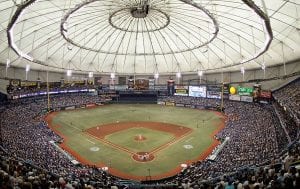
GOLENBOCK: I was a New York Yankee fan all my life until moving to St. Petersburg. The Devil Rays began play in 1998, and I have been a loyal Rays fan ever since.
I do not understand the fans who have lived in Tampa Bay most of their lives but continue to root for their childhood teams. I figure that most of these people also cheat on their spouses. Because of them, we may lose our beloved team to another market, if you want to call Montreal a market.

Who is your favorite baseball player of all times?
GOLENBOCK: Mickey Mantle was and is my favorite baseball player.
Since I was a little boy, Mickey Mantle was THE star of the Yankees. He helped the Yankees win pennants in 1951, 1952, 1953, 1955, 1956, 1957, 1958, 1960, 1961, 1962, 1963 and 1964. When I interviewed him for Dynasty, he was humble and honest and I never forgot what he told me.
My novel entitled 7 is the story of Mickey’s life the way he would have told it if he had had the balls to do so. When he died in 1995, it was as though a family member had died.
HELLER: Easy one. Mickey Mantle AKA “The Mick.”
When I was growing up in a New York suburb, Mickey Mantle was the handsome young star of the team. I was madly in love with him and kept a poster of him on my bedroom wall. I told my mother I would marry him someday. (Never mind that he was already married and I must have been six years old.)
Mickey was The Natural – a golden blond god who could do it all (hit, run, field) better than anyone, and my crush on him lasted for years. It pained me as an adult to watch him drink himself to death, but my memory of his greatness as a player will never die.
. . .
Explore
Peter Golenbock’s work here
Jane Heller’s work at janeheller.com
Rick Wilber’s work at rickwilber.net
. . .





